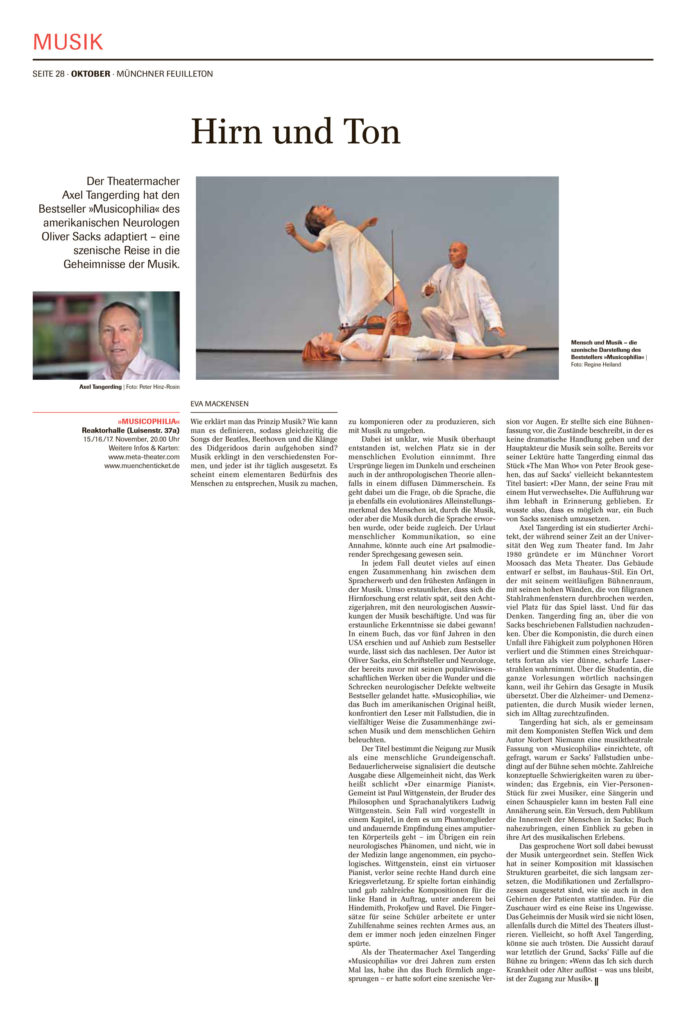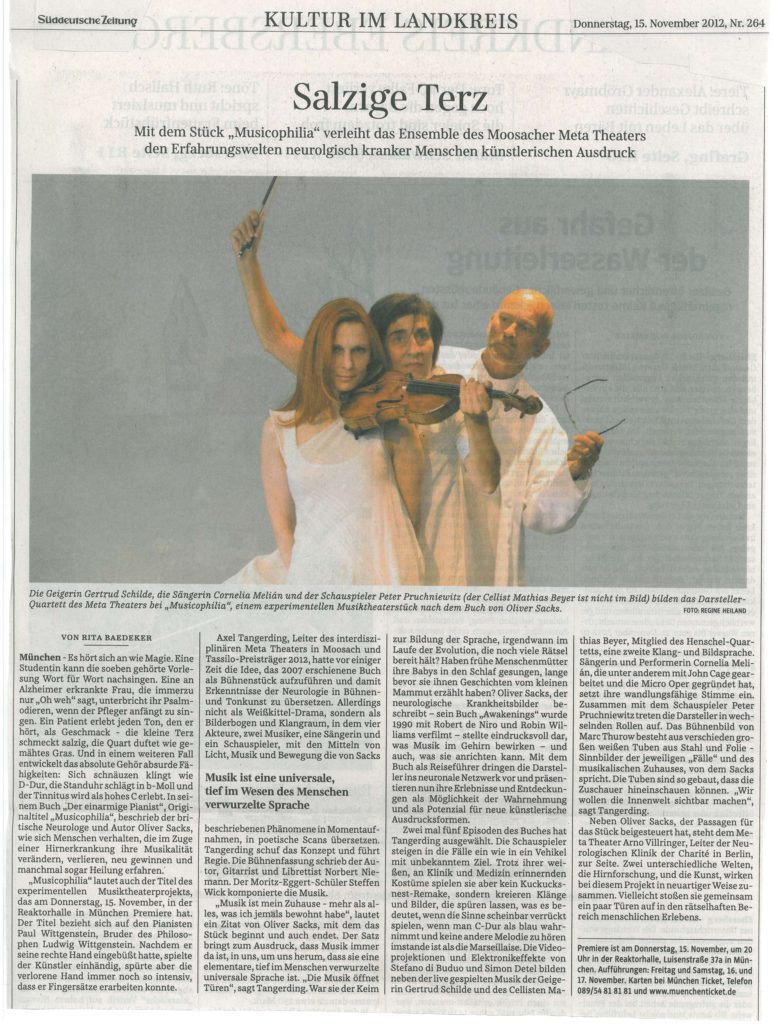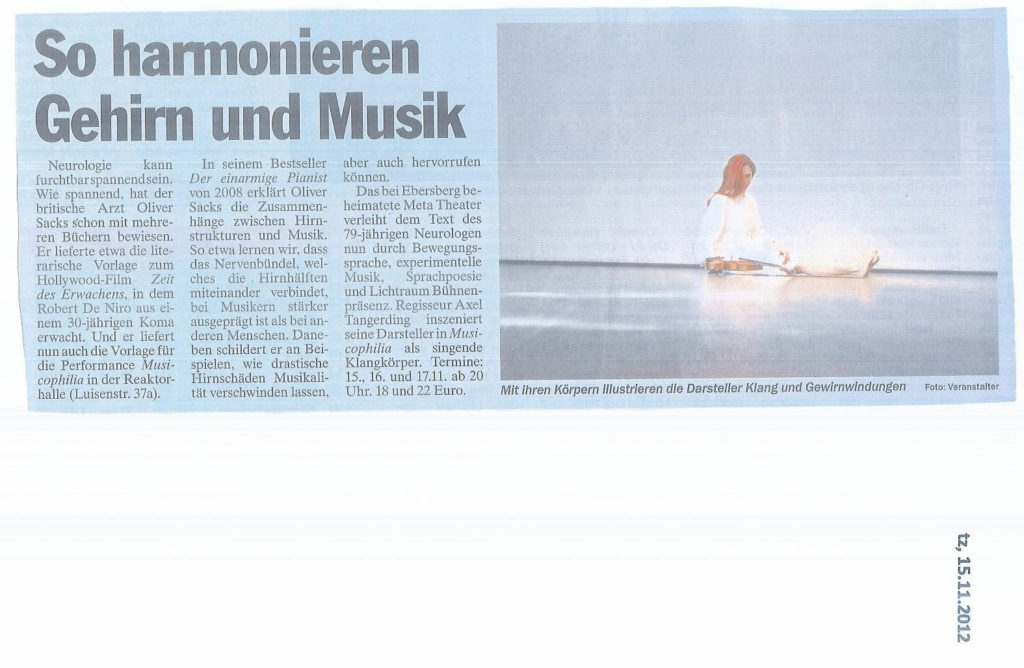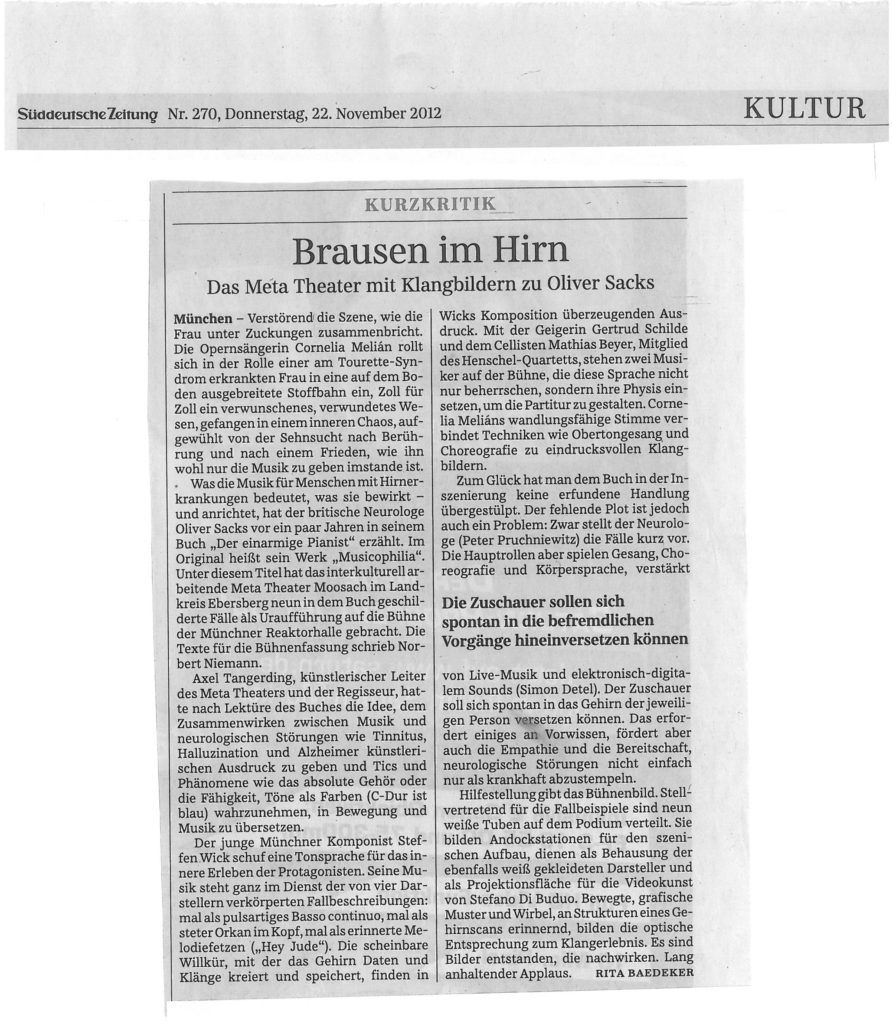Hirn und Ton _ Münchner Feuilleton 10_2012

„Brain and Sound“ – Münchner Feuilleton:
Theatreman Axel Tangerding has adapted the bestseller Musicophilia – a scenic journey towards the secrets of music . . . Together with author Norbert Niemann, Tangerding has created a piece of music theatre . . . its result, a four hander for two musicians, a singer and an actor, can at best be judged an approach, an attempt to bring to life the inner world of Sacks‘ characters, to give an insight into their way of perceiving music … In his compositions, Steffen Wick has used classic structures which fall apart slowly and are exposed to modifications and decompositions similar to the ones of patients‘ brains… „When the self dissolves through illness or old age, we are left with the access to music “ – Eva Mackensen
SZ, 15.11.2012 – Salzige Terz

So harmonieren Gehirn und Musik, tz, 15.11.2012

„Salty third“ – SZ:
„Musicophilia“ lends artistic expression to the experiences of neurologically ill people„ It sounds like magic. A student can sing word for word what she had just heard in the lecture. A woman suffering from Alzheimer’s disease only repeats „Oh weh“, but interrupts her intonation when the nurse starts singing. Another patient perceives each sound he hears as a taste – the minor third tastes salty, the fourth smells of cut grass. In another case blowing the nose sounds like D major, the clock chimes in B minor and the tinnitus is heard as the high C. . . . The four performers, two musicians, a singer and an actor translate the described phenomena into snapshots, into poetic scans. . . . . . The actors enter the case studies like a vehicle with an unknown destination. They create sounds and images which let you feel what it means when the senses seem to get out of control, when you perceive C major as blue. . . . Oliver Sacks himself has also contributed some passages to the play“ – rb
Brausen im Hirn, SZ, 22.11.2012

„A Boom inside the Brain“ – SZ:
„In a disturbing scene, a woman convulses and collapses. A woman suffering from Tourette’s syndrome, opera singer Cornelia Melián wraps herself up in a length of material spread out on the floor, inch for inch a spellbound and wounded being, trapped in an inner chaos, troubled by the desire for stimulation and inner peace like that which only music can give. . . . The young composer Steffen Wick has created a musical idiom for the inner experience: … in a pulsating Basso continuo, in a continuous hurricane inside the head, in fragments of musical memories (“Hey Jude“). Wicks compositions express convincingly the purported arbitrariness with which the brain creates and stores data and sounds. With violinist Gertrud Schilde and the cellist Mathias Beyer, both members of the Henschel-Quartet, two musicians take the stage who not only master this language but who also use their physicality to give shape to the musical score. Cornelia Meliàn‘s versatile voice links techniques … into impressive sounds. . . . The nine tubes of the set … form docking stations for the scenography, serve as homes for the actors, dressed in white, and as projection screens for the video art of Stefano Di Buduo. Moving graphic pattern and swirls reminiscent of brain scans are the optical equivalent to the soundscape. The images created are long-lasting. So was the applause. – Rita Baedeker